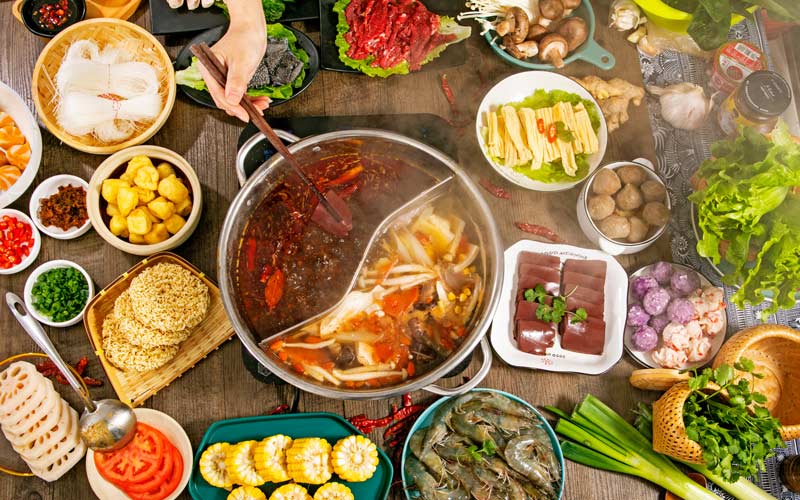
By using these simple tips during your next cookout, you can avoid leftovers, reduce food waste, and help the environment. Photo: Peter Leo via Shutterstock.
Recently, I hosted a housewarming party for my friends, and no party is complete without food. I nearly had a banquet prepared: Dozens of traditional Chinese dishes decorated the table, and the scent of hot pot filled the air with flavorful joy.
The night ended with full hearts and bellies – and leftovers that could have fed another ten people. Nobody wanted to take the food home. And I certainly couldn’t finish it by myself. I didn’t know what to do, and I’m not the only one who has faced this predicament.
According to Feeding America, we waste over 119 billion pounds of food in the United States every year. That’s nearly 40% of all food wasted. Food scraps often end up buried in landfills, producing methane as they degrade – a gas 84 times more harmful than carbon dioxide.
But hosting a waste-free gathering doesn’t have to be difficult. With a few simple actions, you can reduce your impact on the environment while saving money, time, and angst. Here are a few tried-and-true tips to reduce food waste on your next summer cookout – and during your holiday feasts, too.
Plan Ahead: Shop Wisely
- Buy the Right Amount – Mastering the art of purchasing just what’s needed can be daunting. But it doesn’t have to be that way. Circulating a pre-party menu among friends to gauge their appetite can help you create a thoughtful shopping list. My family’s beloved stewed beef with tomatoes shines at gatherings. But quantities hinge on party size and preferences. My mom hates beef, so I always consider that while shopping.
- Buy Carefully – A well-planned menu also eliminates guesswork at the store. Will people like vanilla or chocolate? During my housewarming party, including grilled salmon on the menu brought to light my friend’s seafood allergy. The menu helped us prevent needless waste and saved us a visit to the emergency room. Buying carefully can also ensure you have yummy leftovers you will want to freeze and share.
Avoid Waste: Enjoy It, Share It, Freeze It, and Donate It
- Plan to Share – Share the joy with your neighbors! Plan to share leftovers with friends and neighbors who aren’t at your party. My old neighbor loved Cola Wings – a popular Chinese dish. So, I knew I could count on her to help me finish any leftovers. For big gatherings, have containers ready to go, so you don’t miss the opportunity to spread the love.
- Freeze Leftovers for Another Day – Most food freezes pretty well, and you can quickly reheat it down the road. You can also get creative and turn the leftovers into new creations. Some dishes taste even better when made with leftovers! The firm texture of leftover rice, for example, will guarantee you end up with perfect fried rice every time: light, fluffy, and moist (and never mushy).
- Donate – If you have unopened (snacks) or untouched food (vegetables you won’t use) that are not part of your usual diet, look into donating it to a local food rescue organization or Food Pantry. However, make sure you call ahead to find out their hours and food eligibility (no, they don’t want your friend’s seven-layer bean dip – no one does).
Divert: Your Leftovers Can Benefit the Environment
- Compost — If you’re not composting already, now’s a great time. Some of your leftovers can be composted safely in your backyard – think fruits and veggies, eggshells, and nutshells. Others cannot, like meat and bones. But even if you don’t have a backyard, you can still compost. Some communities offer curbside composting pick-up. Others have a composting bin at the local recycling center or transfer station where you can drop off your eligible leftovers. Private services might also be available to pick up your compost for a small monthly fee. These services usually pick up meat and bones, too – so you also throw those chicken wings bones in there.
While these tips will help save you some stress while planning your parties, you can also use them in your everyday life. Even when cooking just for yourself or your family, you can keep these zero waste tips in mind. Your new mantra is: Buy less, share more, and compost properly.



